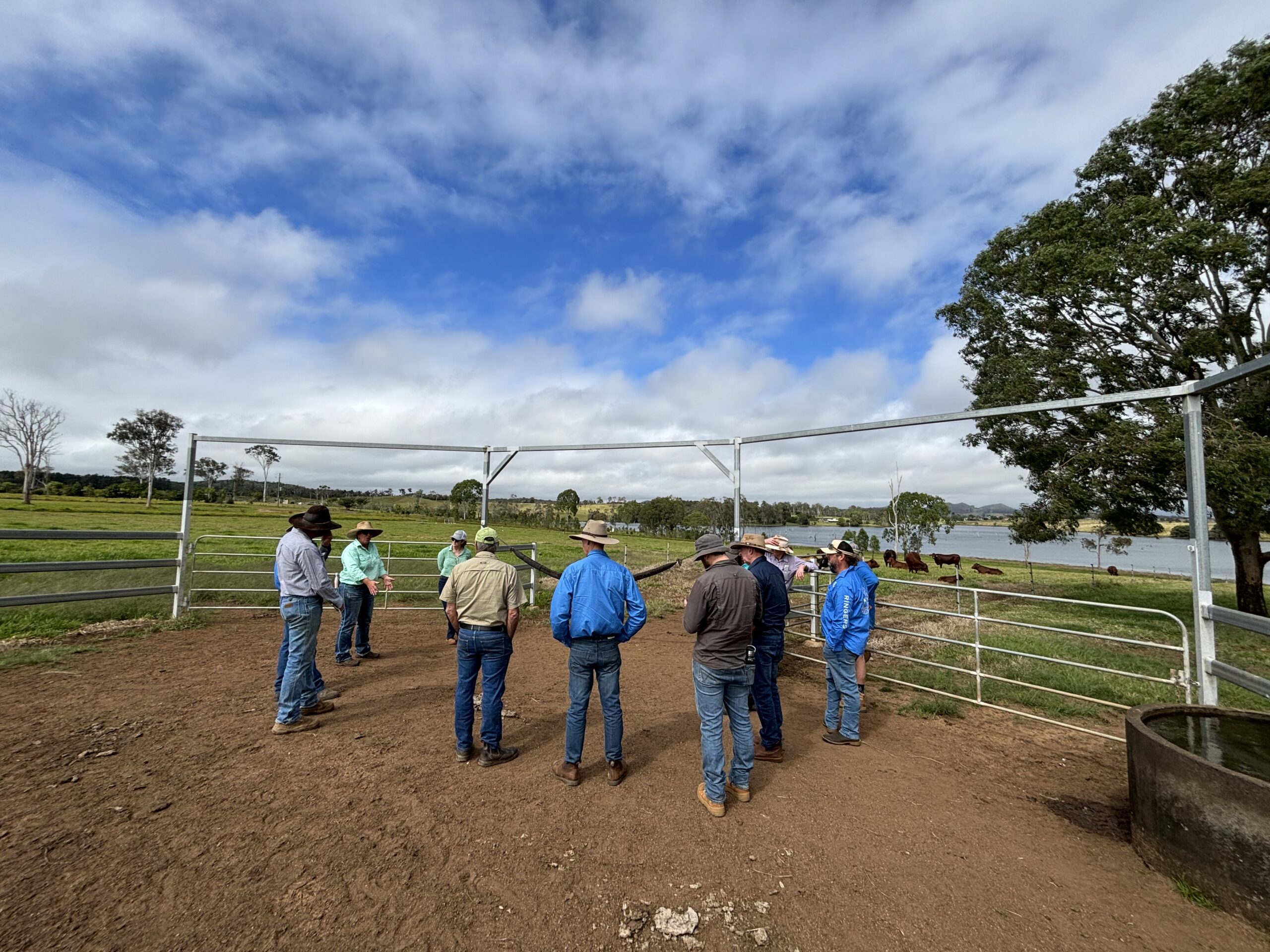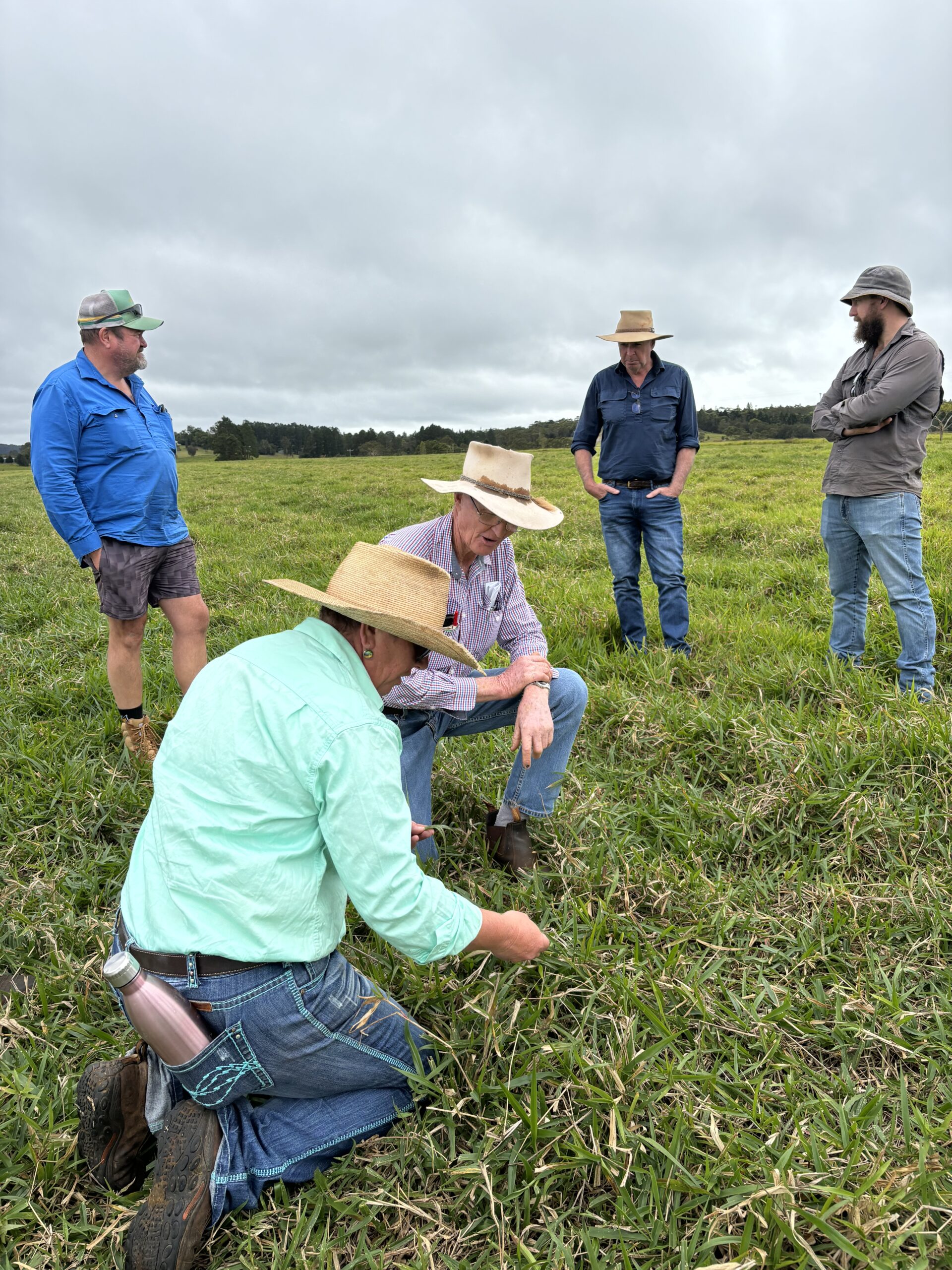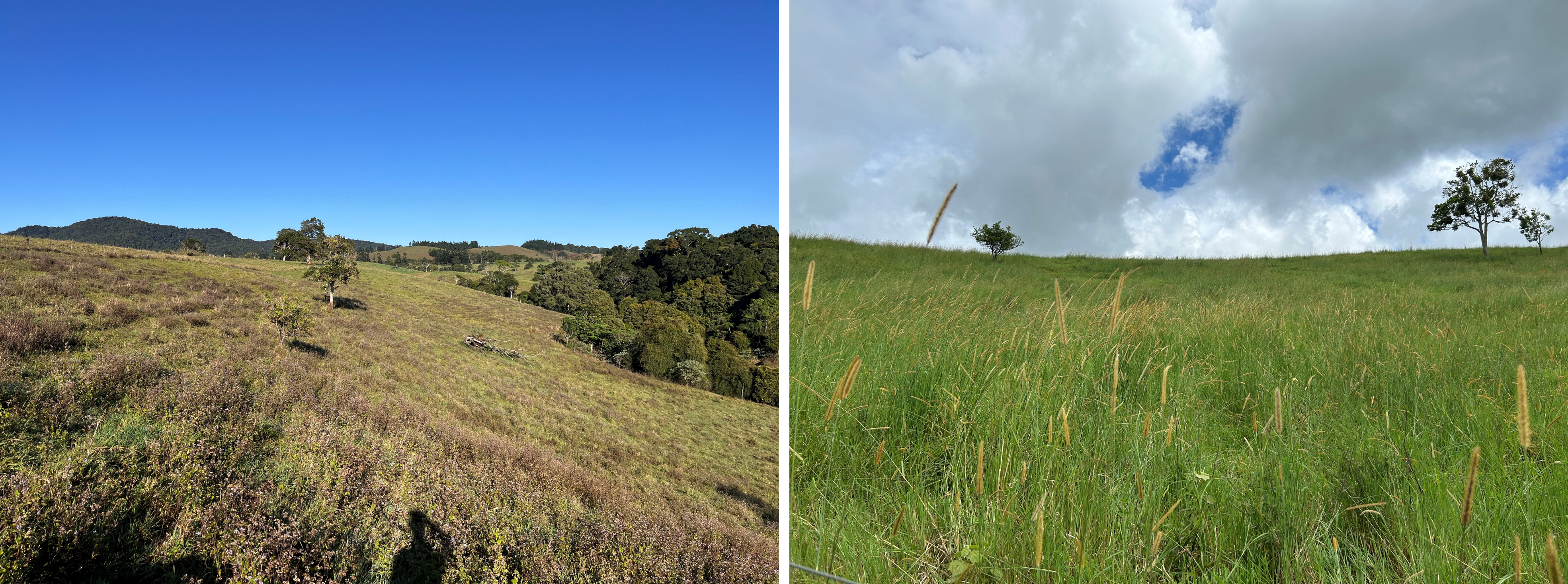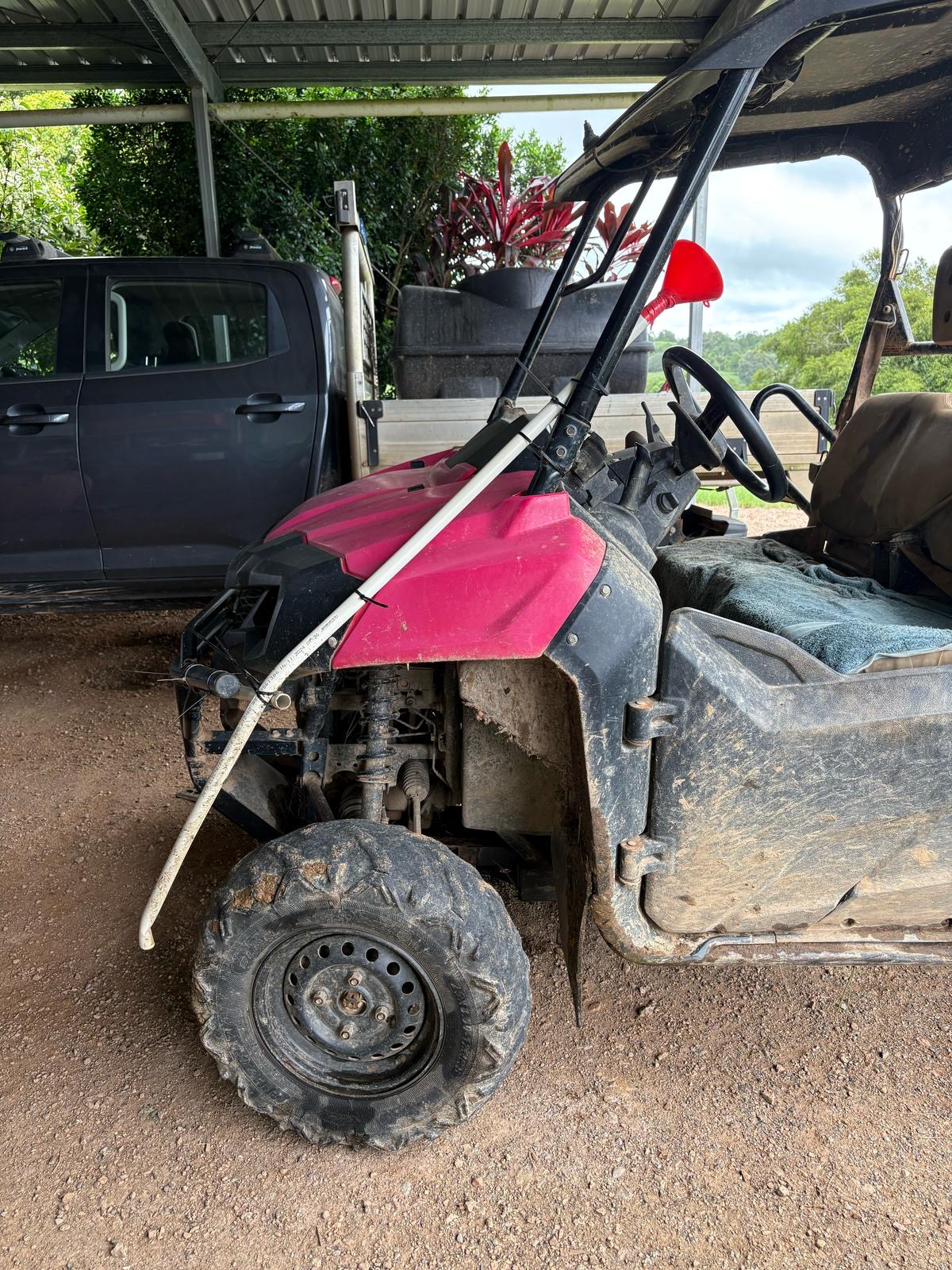Tablelands vs. Legumes: Learnings from a planting season
While establishing legumes into existing tropical pastures is difficult due to the competitive nature of tropical grasses and weeds, great results are achieved if done in a way that maximises establishment and survival of new seedlings. Traditionally tropical pastures are established using full cultivation and planted with a grass and legume mix.
Over the past wet season, a subgroup of producers from the Malanda Beef Plan group in the Atherton Tablelands have tried a variety of legume establishment methods on their properties. The group recognised the value of introducing legumes into pure grass pastures and have successfully applied for peer-to-peer funding to support the adoption of legumes, creating the Tablelands Improved Pasture Peer Learning Environment (TIPPLE). The TIPPLE project is proudly funded by the Integrated Engagement and Capacity Building project under the Queensland Government’s Queensland Reef Water Quality Program and is supported by the Mareeba Department of Primary Industries pastures team and project. The TIPPLE project aims to improve peer-to-peer learning opportunities with on-farm activities directed at improving producer skills and knowledge surrounding sown pasture establishment and management.


Seasonal conditions have been favourable, meaning all methods have had success to varying degrees, but as with all new projects, there is always learnings. The group has used a range of legume planting techniques, from purpose built minimum till planters to lower cost methods such as mulching prior to sowing and letting cattle walk legume seed in. If you are thinking about trying to establish legumes on your property, read on for some learnings from a season planting legumes in the tablelands.
Learnings from producers:
- Spraying weeds (i.e. sensitive weed, blue top) is imperative before planting legumes. There are no herbicides that can be used in grass legume pastures without causing damage to legume populations. If the paddock has a large population of weeds, be sure to treat it with herbicides before introducing legumes.

- Ensure your seed depth is correct, planting legume seeds too deep means the seedlings have to travel too far before they can make it to the light. Seed should be placed at a depth of about 3 times the length of the seed and covered with soil to ensure best possible chance of germination.
- Plant multiple perennial legume species. You’ve gone to all the trouble to prepare the paddock, you might as well plant as many species as you can to diversify your paddock further. Be sure to match the species of legumes planted to your soil type and rainfall.
- Ensure that grass competition is kept restricted using light grazing and/or slashing to keep the grass from shading out the new legume seedlings.

- While purpose-built machinery will achieve the most consistent results, other basic techniques such as seeding in front of a four-wheeler bike (pictured below) into a well grazed paddock has also proven to be somewhat successful this season.

So, what’s the key to success?
- Correct soil nutrition based on soil test results prior to planting.
- Good quality, tested seed that’s suitable for your location, rainfall and soil type.
- Plant into a moist seedbed.
- Plant seeds approximately 3 times the length of the seed and ensure light coverage of soil.
- Some compaction (e.g. using rollers or press wheels) is crucial to maximises moisture supply to the seed through seed-soil contact.
- Pasture competition prior to planting must be reduced with heavy grazing, mulching or slashing. Additionally, during the early stages of establishment, grass competition must be continuously managed with light grazing or slashing to ensure new seedlings aren’t being shaded out by vigorous pasture growth.
The team has been able to support the TIPPLE project through the North Queensland Pasture Resilience Project, a collaboration between DPI and MLA aiming to encourage the adoption and use of legume pastures in north Queensland. If you would like to seek personalised assistance establishing legumes on your property or get involved in the program, please contact one or more of the following team members.
| Research | Extension |
|---|---|
| Kendrick Cox Mareeba 0348 138 262 kendrick.cox@dpi.qld.gov.au | Karl McKellar Charters Towers 0418 189 920 karl.mcKellar@dpi.qld.gov.au |
| Craig Lemin Mareeba 0467 804 870 craig.lemin@dpi.qld.gov.au | Bernie English Mareeba 0427 146 063 bernie.english@dpi.qld.gov.au |